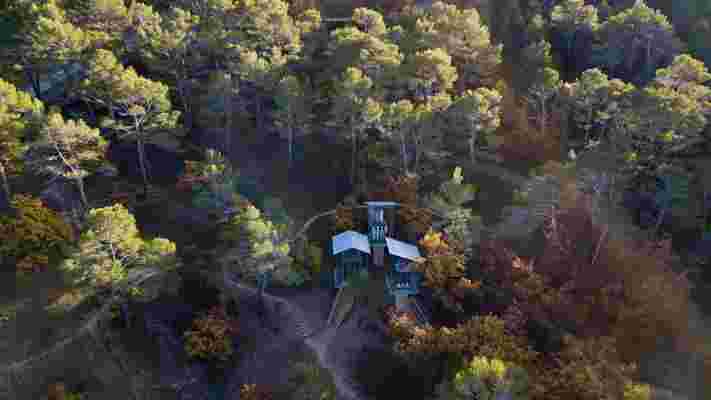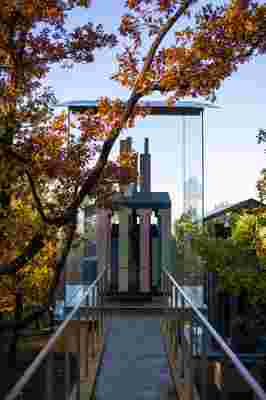Over the past few years, hospitality magnate Paddy McKillen has transformed a 500-plus-acre stretch of landscape outside of Aix-en-Provence, France, into an environment for the exhibition of art and architecture. Once an Ancient Roman–era vineyard, this new endeavor, Château la Coste, features buildings and site-specific installations from a roster of preeminent artists and architects, including Tadao Ando , Kengo Kuma , Jenny Holzer , and Lee Ufan .

An aerial view of the exhibition within the land of Château la Coste.
The newest addition to this blue-chip cohort is Tony Berlant’s sculptural triptych The Marriage of New York and Athens, a work with a one-of-a-kind provenance. Berlant, a Los Angeles–based sculptor, made the pieces between 1966 and 1968 to serve as an element of his studio’s interior design, and for a few years, they did just that. But when he became busier and needed more space, he removed them and loaned them to a then-upstart architect who had become a close personal friend. That architect: Frank Gehry.

A look at Tony Berlant’s sculpture within Gehry's exterior design.
For several years, Gehry kept them in his studio, and, as Berlant recalls, the abstract aluminum-and-plywood constructions became something that Gehry considered a formative influence toward what would become his signature style. Then, in 1973, they were exhibited at the Whitney Museum, but when they were deinstalled from that show, they spent the next 45 years out of view, tucked away in a basement storage facility—until they were acquired by Château la Coste. Over the decades, collectors had expressed interest in one or two of them, but Berlant was determined to keep them as a set of three. “When installed as a group of three, they are more about place than they are about sculpture,” Berlant says.
The ultimate resource for design industry professionals, brought to you by the editors of Architectural Digest

McKillen is determined to keep each of the works in his growing collection site-specific. To that end, Berlant spent several days walking the property to choose a site for his sculptures, eventually settling on a hillside terraced by ancient Romans. “Outdoor sculpture parks can sometimes resemble parking lots for exceptionally expensive art, and this is not that at all,” says Berlant. “Everything is so intentional.”
The autumnal leaves add more natural drama to the sculptural exhibition.
Further adding to the installation’s significance—both personal and professional—Château la Coste commissioned Frank Gehry to design a pavilion to frame the sculptures. Of their new context, installed as a triptych in architectural dialogue with his longtime friend, Berlant says, “It’s more than a dream come true; it’s a miracle.”
